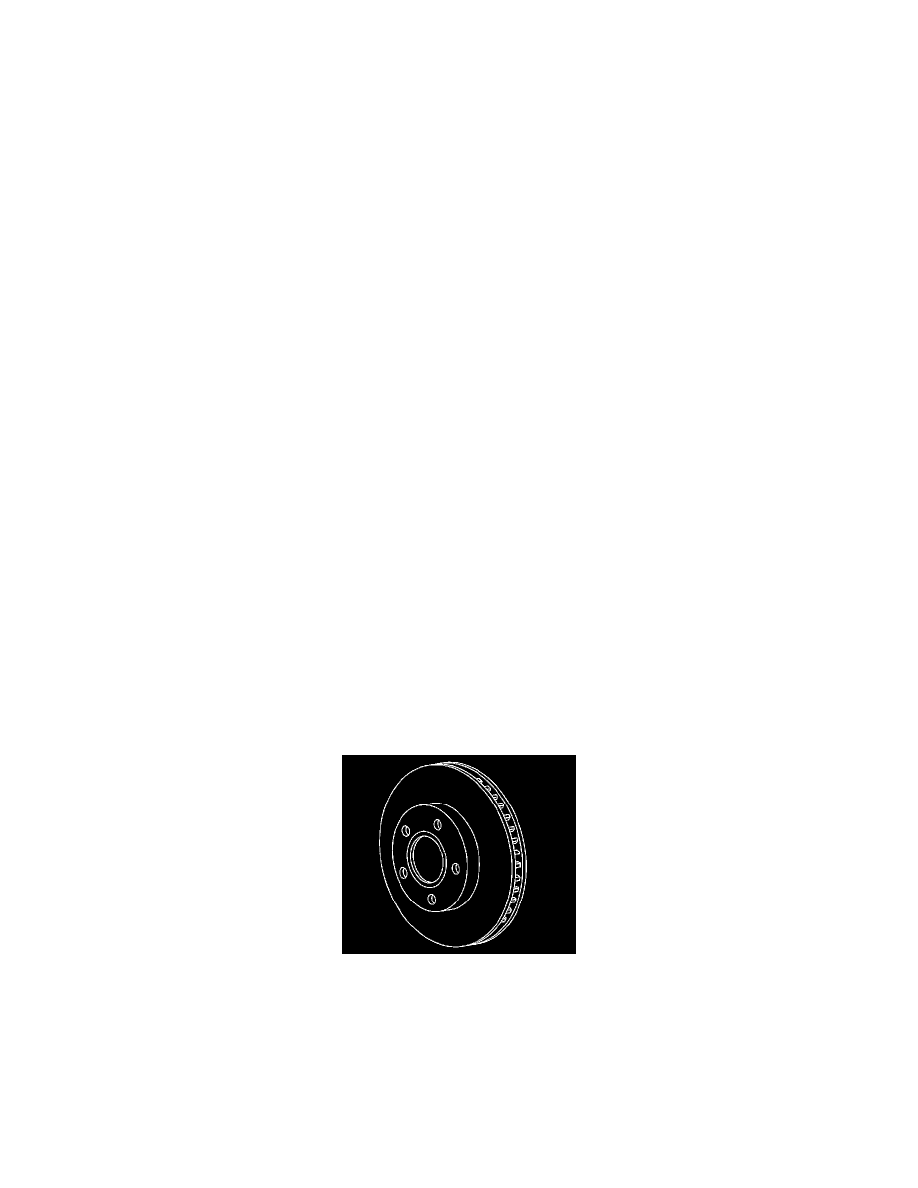Rendezvous V6-3.5L (2007)

Brake Rotor/Disc: Removal and Replacement
Brake Pad and Rotor Burnishing
Brake Pad and Rotor Burnishing
Caution: Road test a vehicle under safe conditions and while obeying all traffic laws. Do not attempt any maneuvers that could jeopardize
vehicle control. Failure to adhere to these precautions could lead to serious personal injury and vehicle damage.
Caution: Refer to Brake Dust Caution.
Burnishing the brake pads and brake rotors is necessary in order to ensure that the braking surfaces are properly prepared after service has been
performed on the disc brake system.
This procedure should be performed whenever the disc brake rotors have been refinished or replaced, and/or whenever the disc brake pads have been
replaced.
1. Select a smooth road with little or no traffic.
2. Accelerate the vehicle to 48 km/h (30 mph).
Important: Use care to avoid overheating the brakes while performing this step.
3. Using moderate to firm pressure, apply the brakes to bring the vehicle to a stop. Do not allow the brakes to lock.
4. Repeat steps 2 and 3 until approximately 20 stops have been completed. Allow sufficient cooling periods between stops in order to properly
burnish the brake pads and rotors.
Front Brake Rotor Replacement
Brake Rotor Replacement - Front
Tools Required
*
J 41013 Rotor/Drum Flange Resurfacing Kit
*
J 42450-A Wheel Hub/Flange Resurfacing Kit
Removal Procedure
Caution: Refer to Brake Dust Caution.
Notice: Any new rotor must have the protective coating removed from the friction surfaces before being placed in service. Remove the protective
coating using denatured alcohol or an equivalent, and wipe the surface clean with clean cloths. Do not use gasoline, kerosene, or other oil base
solvents which may leave an oily residue. This residue is damaging to the brake lining and is flammable.
1. Raise and suitably support the vehicle. Refer to Vehicle Lifting.
2. Remove the tire and wheel assembly.
Notice: Support the brake caliper with heavy mechanic's wire, or equivalent, whenever it is separated from its mount and the hydraulic flexible
brake hose is still connected. Failure to support the caliper in this manner will cause the flexible brake hose to bear the weight of the caliper, which
may cause damage to the brake hose and in turn may cause a brake fluid leak.
3. Remove and support the caliper and bracket as an assembly with heavy mechanics wire. DO NOT disconnect the hydraulic flexible brake hose.
4. Remove the brake rotor.
